- News
- Reviews
- Bikes
- Accessories
- Accessories - misc
- Computer mounts
- Bags
- Bar ends
- Bike bags & cases
- Bottle cages
- Bottles
- Cameras
- Car racks
- Child seats
- Computers
- Glasses
- GPS units
- Helmets
- Lights - front
- Lights - rear
- Lights - sets
- Locks
- Mirrors
- Mudguards
- Racks
- Pumps & CO2 inflators
- Puncture kits
- Reflectives
- Smart watches
- Stands and racks
- Trailers
- Clothing
- Components
- Bar tape & grips
- Bottom brackets
- Brake & gear cables
- Brake & STI levers
- Brake pads & spares
- Brakes
- Cassettes & freewheels
- Chains
- Chainsets & chainrings
- Derailleurs - front
- Derailleurs - rear
- Forks
- Gear levers & shifters
- Groupsets
- Handlebars & extensions
- Headsets
- Hubs
- Inner tubes
- Pedals
- Quick releases & skewers
- Saddles
- Seatposts
- Stems
- Wheels
- Tyres
- Health, fitness and nutrition
- Tools and workshop
- Miscellaneous
- Cross country mountain bikes
- Tubeless valves
- Buyers Guides
- Features
- Forum
- Recommends
- Podcast
£1,700.00
VERDICT:
Loads of clearance and predictable handling make for on/off-road adventure fun – but some upgrades are needed
Weight:
10,700g
Contact:
At road.cc every product is thoroughly tested for as long as it takes to get a proper insight into how well it works. Our reviewers are experienced cyclists that we trust to be objective. While we strive to ensure that opinions expressed are backed up by facts, reviews are by their nature an informed opinion, not a definitive verdict. We don't intentionally try to break anything (except locks) but we do try to look for weak points in any design. The overall score is not just an average of the other scores: it reflects both a product's function and value – with value determined by how a product compares with items of similar spec, quality, and price.
What the road.cc scores meanGood scores are more common than bad, because fortunately good products are more common than bad.
- Exceptional
- Excellent
- Very Good
- Good
- Quite good
- Average
- Not so good
- Poor
- Bad
- Appalling
The Marin Cortina AX1 is further proof (if any were needed) that the reasonably priced go-anywhere Useful Bike 'trend' is a trend no more – because these bikes are now mainstream, and single-purpose bikes are the odd ones out. With perfectly adequate roadability and the chops to make you grin and hoot in the mud, yes, sorry, here it comes: This Could Be The Only Bike You'll Ever Need™.
- Pros: Great alloy frame and carbon fork, decent finishing kit, tyre clearance, tubeless-ready
- Cons: Expensive for a Tiagra/mechanical brake spec
The Cortina AX1 is the lower spec in the two-bike Cortina range, which is aimed squarely at the privateer weekend cyclo-cross racer. Fortunately, what goes into making a decent cyclo-cross bike can – sometimes – make for a decent road and gravel-adventure bike. This is one of those times.
> Find your nearest dealer here
The Ride
I found the handling of the AX1 to be both forgiving and interesting. Possibly the harshest test of a bike's handling has to be riding on sheet ice – the near-instantaneous removal of grip from one or both wheels leaving microseconds for your reactions to keep things upright.
I live in the Highlands and with a midwinter test period there was plenty of time to get to know the AX1 in sub-zero temperatures. A prolonged gentle gravel-road climb afforded a perfect opportunity to get to know the limits of geometry and traction in a safe environment, and I can report that Schwalbe G-One tyres (you get X-Ones on production models) paired with the AX1's handling kept me upright and moving at a reasonable pace over long stretches of melted-then-refrozen snow, further compacted and smoothed by passing estate vehicles.
The back-end departed traction's bounds with predictability, allowing a flick of the bar to bring things back into line without any untoward trips earthward (road.cc does not endorse this practice, do not try this at home, etc).
Back on firmer ground among greasy leaf-matter atop Scottish granite, the AX1 descended with aplomb, letting me collect a top 10 Strava position on a 9% gradient farm track descent. I would return a week later having fitted 30mm Schwalbe Winter studded tyres and take that same segment position to second, only beaten out by a bloke on a mountain bike in the middle of summer.
On the same ride I dived off the main road home to explore a forest singletrack that a friend had pointed out previously. This turned out to be a very bouldery, leafy, greasy, quad bike track featuring repeated switchbacks down a hillside that often met or exceeded 25% gradient – 1-in-4 in old money.
Here, the AX1 showed its credentials in the mucky stuff. I was able to pilot my way through the large rocks and fallen branches at speed, often as not with the back wheel locked to cut through the crud and contact firmer ground. At no time was it anything less than an absolute hoot, and I emerged onto the river Tay National Cycle Network path grinning from ear to ear and keen for more.
I recount this as, apart from being reason to get out there and fearlessly seek new adventures, it also exemplifies the sort of handling that will see you through the sketchiest of cyclo-cross races with ease. Unfortunately, the timing of this review meant I was unable to get the Cortina out in a competitive 'cross environment, so had to resort to self-imposed all-out blasts around the local estate's twisting paths.
As above, the handling allows fast, predictable changes of direction to pick lines, climbing or descending, while also keeping on track during speedy descents or on the flat, among gravel or rutted tracks.
As a relatively low-cost entry-level bike for getting into cyclo-cross racing, the Cortina AX1 is a solid choice.
The spec
On the face of it, the AX1 seems rather pricey for the spec: Shimano Tiagra 10-speed mechs and shifters, driven by FSA cranks and threaded FSA bottom bracket.
Time was when Tiagra was seen on entry-level steel touring bikes as the minimum-acceptable 'decent' kit. The reality is now it feels just as sharp as Ultegra did a few years back (I can directly compare my everyday 6800 Ultegra setup) and the fact that it's 'only' 10-speed is neither here nor there on a £1,700 bike designed for fitness, fun and a bit of Sunday racing.
On the subject of gears, the AX1 gets 46/36-tooth chainrings, which when driving the 11-34 cassette felt overgeared in technical, steep terrain but spun out on tarmac descents. My preference would be for a 50/34 Tiagra chainset and I'd swap the BB for a Tiagra unit at the same time – if you got the shop to do it you could sell the FSA parts as new.
For an extra £500 the AX2 gets the natty SRAM Apex 1x11 drivetrain with hydraulic brakes. This jump in spec is definitely a step up towards a podium place of a muddy autumn Sunday, sliding about your local park. Also the AX2 Apex setup is lower-geared at the easy end, helping you summit those short, punchy climbs favoured in cyclo-cross races.
Likewise, the Ribble CX5 that Jack tested in December, similarly priced and arguably aimed at the same kind of audience – 'our new, top of the range, race ready, off-road adventure package' – was specced with a 50/34 Shimano 105 chainset and 11-32 cassette.
The major letdown for me in the spec of the Marin was the TRP Spyre mechanical disc brakes. Fortunately they take Shimano M515 pads, so you can ditch the semi-metallic TRP ones for something with an actual chance of slowing you down. Semi-metallic is the sort of pad specced for prolonged-to-extreme mud, and to be fair the AX1 is described as a bike for the privateer cross racer so they could be seen as a sensible choice for grotty winter conditions. But starting out with organic and letting the customer decide whether to spend £20 on metallic pads if needed would seem a better strategy to my mind, rather than setting them up out of the box with a compound overly-hard for general road and gravel riding, or 'cross racing in less-than-abysmal conditions. I'd swap them out and hold in reserve for the day your ride requires them.
After you've upgraded the crankset and bottom bracket, in my view the next thing to go would be the Spyres, replaced by the excellent TRP Hy/Rds. Not that the Spyres are a bad brake per se, but the hydraulic cable-actuated Hy/Rds are better.
Solid setup
All of the above might sound rather negative, but the good news is the rest of the Cortina AX1's setup is solid, to the point it's replicated pretty much bit-for-bit on the £2,200 AX2.
An often-compromised feature of bikes sold as 'tubeless ready' is the tyre they are actually specced with: it might look like the one on the tyre manufacturer's website listed as tubeless, but it's actually an OEM-only model (meaning only sold to bike assemblers) and is not an actual tubeless tyre, to save cost.
Marin delivers the AX-1 with the rather excellent Schwalbe X-One cyclo-cross tyre installed, and as Liam found a while back, it's a great tyre. Unfortunately our pre-production review Cortina arrived with the also excellent but less grippy Schwalbe G-One fitted. As tyres are the easiest-swapped and most-impactful change you can make to a bike, I played around, as you will read further.
As expected, the Schwalbe G-Ones set up tubeless with ease, after adding tape and valves. On the 20.5mm internal-width rims the G-Ones measured 35mm, a smidge wider than Schwalbe's spec.
> Buyer's Guide: Tubeless tyres
Starting out at 40/45psi front/rear for my 75kg weight, I dropped it down to 25/28 with no loss of speed – getting 10th on a local 1km sprint Strava segment without really trying. Which was nice.
Although not at all a suitable match for cyclo-cross racing or serious off-roading, the G-Ones provided oodles of grip, only defeated by piles of wet leaves on a 15% gradient.
Some other features of note include the excellent Naild 12-3-9 QR thru-axles. These take all the guesswork out of removing or fitting the wheels, by giving you the guide lever positions of – you guessed it – start at 12 o'clock, turn to 3, and then fold over to 9. Removing the wheels a number of times to fit different tyres, the process was replicable and solid.
There's a 15mm at the front and a 12mm out back, one niggle of the rear dropout design being that you have to vertically align the drive-side bearing cap to slot upwards into the custom-machined Naild dropout. Once you know to do this it only takes a second, but if you miss this step out the wheel will never seat home, especially when trying to avoid dinging the rotor against the frame or calliper on the other side.
Looks-wise, the retro Marin paint job received many appreciative comments in person and online. The painted alloy did pick up a few chips, but nothing that didn't add to the overall ruggedery of the AX1.
Fork & fittings
The carbon fork affords a ton of clearance; I reckon you'd get a 50mm tyre in there, 45mm no trouble between the seat and chainstays alike. Marin has gone for a large finned alloy heatsink-cooling fin on the fork brake mount. Frankly, I can't imagine the scenario where you might generate that sort of heat short of a loaded gravel touring descent off a pass in the Karakoram mountains, but maybe that's what it's there for.
Speaking of loads, there are full rack and mudguard mounts on the frame, including attachment points at the brake bridge and – joy to the British clubman's ears – at the bottom bracket too. Those full-length SKS Bluemels shall ride again.
Up front, 4mm mudguard stays can be slid into bosses inside the fork leg and secured using the provided 2mm hex grub screws – Loctite highly recommended. In this brave new world of thru-axles scuppering the get-out-of-jail front mudguard mount solution of a metal tab under the QR, it's good to see brands thinking about how to fix things securely and tidily.
The internal cable routing is interesting. They go in the top sensibly enough, but all exit the down tube at the bottom bracket through the open end of the down tube itself, which is left unwelded at the bottom. The down tube is ovalised to the width of the BB, affording a ton of weld space, so there are no stiffness issues with the lower portion being open. This design seems to solve the endless hassle that internal cable routing brings: trying to get it back out of a very small aperture. The routing along the chainstays is external, befitting the retro paint job.
Helping keep things seemly at the front end is the wide handlebar. As specced on the 56cm model it measures 420mm at the hoods and flares to 470-ish at the drops. The sensible 90mm stem is almost flat, and when on top of a 160mm head tube meant I had to use all the spacers underneath to get the bar to my preferred fit.
Likewise, the saddle I had slammed rearward to give me a fit approximating my decade-old setup. I'm 6ft tall and Marin recommends the 56 for people 5ft 9in to 6ft, so about right, but I'm on the cusp of jumping up to the 58.
Conclusion
For me, the best reason to buy a Cortina AX1 is the freedom to dive off the tarmac as the fancy takes you. On test at the same time were some 38mm Compass Barlow Pass tyres – massive, super-supple tubeless tyres that measured just over 40mm when fitted, with plenty of clearance remaining at frame and fork.
Even with no tread pattern to speak of beyond a fine herringbone, their large supple carcass combined with the Cortina's handling meant it was perfectly suited to a 50/50 on/off-road day out. Long sections of large gravel were eaten up at high speed, the tyres sticking to the loose surface and inspiring the confidence to really crack on.
Out on a 40-mile blat around the glens while running the aforementioned Winter studded tyres, I managed a bunch of second and third-best times. The subsequent ride with the off-roading mentioned above ended in a maximal effort along a dead straight sealed estate road, studded tyres buzzing like a hive of bees but keeping me vertical.
> Buyer's Guide: 18 of the best gravel & adventure bikes
That run home resulted in a slew of Strava top-10s, including second place to a KOM set by a stupidly-fit friend back in the summer on a quasi-aero bike with slicks. To be just one second off his time on studded tyres told me two things: it's going to be an interesting first group ride out when it warms up, and secondly, the AX1 has the chops to go fast when you need it to. And if that involves a lot of slippery mud, rocks, leaves or whatnot, all the better.
Verdict
Loads of clearance and predictable handling make for on/off-road adventure fun – but some upgrades are needed
road.cc test report
Make and model: Marin Cortina AX1
Size tested: 56cm
About the bike
State the frame and fork material and method of construction. List the components used to build up the bike.
FRAME Series 4 CX, 6061 Aluminum, 700C Wheels, Tapered Head Tube, Relieved BB, Internal Cable Routing, Post Mount Disc, 142x12mm Naild 12.3.9 Thru-Axle
FORK Naild NavIt Carbon, Tapered Alloy Steerer, Naild Locking Thru-Axle, IceIt Brake Cooling Fin
RIMS Marin Aluminum Double Wall, 21mm Inner, 30mm Tall, Disc Specific, Tubeless Compatible
HUB REAR Forged Aluminum Alloy, 142x12mm, 6-Bolt Disc, 32H
SPOKES 14g Black Stainless Steel
TIRES Schwalbe X-One Allround, 700Cx35, Folding Bead
DERAILLEUR REAR Shimano Tiagra 10-Speed
DERAILLEUR FRONT Shimano Tiagra
SHIFT LEVER Shimano Tiagra 2x10-Speed
CRANKSET FSA Gossamer Compact, 46/36T
BOTTOM BRACKET FSA MegaExo Threaded
CHAIN KMC X10
CASSETTE Shimano Tiagra HG-500, 11-34T
BRAKES FRONT Tektro Spyre-C Road Mechanical Disc, 160mm Rotor
BRAKES REAR Tektro Spyre-C Road Mechanical Disc, 160mm Rotor
BRAKE LEVERS Shimano Tiagra 10-Speed STI
HANDLEBAR Marin Butted Alloy, Compact 12 Flared Drop
STEM Marin 3D Forged Alloy
GRIPS Marin Microfiber Tape
HEADSET FSA Orbit, Sealed Cartridge Bearings, 1 1/8" x 1 1/2'
SEATPOST Marin Alloy
SADDLE Marin Beyond Road Concept
- - -
EXTRAS Naild Front Locking Thru-Axle, 12.3.9 QR Mechanism, LocIt Lever Technology
Tell us what the bike is for
Marin says: "ENTRY LEVEL CYCLOCROSS RACING GRAVEL RACING SUPER COMMUTER
"Buy the Cortina AX on Saturday, race it on Sunday. The Cortina AX is a full-featured gravel or cyclocross race bike that can help privateer off-road drop bar speed pursuits reach their maximum potential."
Frame and fork
Overall rating for frame and fork
9/10
Tell us about the build quality and finish of the frame and fork?
Built and finished nicely. The welds aren't the prettiest, and the post brake mounts are a bit outdated.
Tell us about the materials used in the frame and fork?
6061 Aluminium is a tried-and-trusted material that should last you a lifetime. The Naild Navit carbon fork is designed to work with the QR skewer.
Tell us about the geometry of the frame and fork?
With a head angle of 72.5 degrees and a seat tube of 73.5, the Cortina isn't pushing any kind of design envelope, feeling well-balanced without being either sluggish or nervous. With a BB drop of 67mm there's a reasonable amount of clearance for pedals, without feeling like you're too high turning corners or out on the road. Chainstays are 425mm, so great for climbing (with the right gear ratios/tyres), less so for adding panniers for gravel tours. The 160mm head tube might see you going for a riser stem if you're not as flexible as you once were/should be, or you want to enjoy the view without a sore neck after a few hours.
How was the bike in terms of height and reach? How did it compare to other bikes of the same stated size?
The fit is comparable to other bikes, I needed the seat slammed back and the stem as high as possible to replicate my fit, but then I am on the cusp of needing to go the next size up.
Riding the bike
Was the bike comfortable to ride? Tell us how you felt about the ride quality.
The ride quality was excellent. For an alloy frame and carbon fork, there was no harshness evident, helped no doubt by large tyres.
Did the bike feel stiff in the right places? Did any part of the bike feel too stiff or too flexible?
Baby bear's porridge this one, just right.
How did the bike transfer power? Did it feel efficient?
Yes. Even with longer 425mm stays to help the wheelbase and stability, it felt snappy on tarmac acceleration.
Was there any toe-clip overlap with the front wheel? If so
Not notably. You'd catch a large mudguard, but that's not the fault of the bike.
How would you describe the steering? Was it lively Not 'lively', but there when needed to correct course. It did the job.
Tell us some more about the handling. How did the bike feel overall? Did it do particular things well or badly?
Taken as a package, the overall feel of the bike is stable and predictable but able to react to input quickly to get you out of trouble. On fast, rough descents there's no nervousness.
It delivered both on and off-road – quite some feat.
Which components had the most effect (good or bad) on the bike's comfort? would you recommend any changes?
Not sure it's 'comfort' exactly, but the 36-tooth small chainring made for a struggle up steep, technical pitches – a 34t would make life easier.
Which components had the most effect (good or bad) on the bike's stiffness? would you recommend any changes?
No, none.
Which components had the most effect (good or bad) on the bike's efficiency? would you recommend any changes?
The 48/36 chainset is typical for a cross bike setup, if a bit old school, and if you want to go adventuring the small's too large and the large too small.
Rate the bike for efficiency of power transfer:
8/10
Rate the bike for acceleration:
8/10
Rate the bike for sprinting:
7/10
Fat tyres don't make for great sprints.
Rate the bike for high speed stability:
9/10
Rate the bike for cruising speed stability:
9/10
Rate the bike for low speed stability:
8/10
Rate the bike for flat cornering:
8/10
Rate the bike for cornering on descents:
8/10
Rate the bike for climbing:
7/10
The drivetrain
Rate the drivetrain for performance:
6/10
It performed fine, but different size chainrings would make the bike more versatile.
Rate the drivetrain for durability:
5/10
Time will tell. In my experience these FSA BBs don't last as long as Shimano equivalents, but your experience might be different.
Rate the drivetrain for weight:
7/10
Rate the drivetrain for value:
7/10
Tell us some more about the drivetrain. Anything you particularly did or didn't like? Any components which didn't work well together?
The chainrings are the wrong size for adventuring, if that's what you're going to do.
Wheels and tyres
Rate the wheels for performance:
8/10
Rate the wheels for durability:
8/10
Didn't go out of true.
Rate the wheels for weight:
7/10
Rate the wheels for comfort:
8/10
Rate the wheels for value:
8/10
Tell us some more about the wheels.Did they work well in the conditions you encountered? Would you change the wheels? If so
They did the job, never feeling sloppy, and tubeless setup was easy. Having 20.5mm internal width means you can go fat with no concerns.
I can't comment on the X-Ones that will come spec, but see the road.cc review here.
Controls
Rate the controls for performance:
9/10
Shimano Tiagra is excellent. Can't fault it.
Rate the controls for durability:
9/10
Rate the controls for weight:
8/10
Rate the controls for comfort:
9/10
Rate the controls for value:
10/10
Anything else you want to say about the componentry? Comment on any other components (good or bad)
The Naild 12-3-9 QRs are genius. I'd swap the TRP Spyre pads for organic ones straight away, and for adventuring a 50/34 chainset would be more versatile than the 48/36 fitted.
Your summary
Did you enjoy riding the bike? Yes
Would you consider buying the bike? Yes
Would you recommend the bike to a friend? Yes
Rate the bike overall for performance:
8/10
Rate the bike overall for value:
7/10
Use this box to explain your overall score
As it is it's a great bike, but hydraulic brakes and a 50/34 chainset would gain it another point (maybe two if it were a hundred quid cheaper too).
About the tester
Age: 44
I usually ride: Merida Ride 5000 Disc My best bike is:
I've been riding for: Over 20 years I ride: A few times a week I would class myself as: Expert
I regularly do the following types of riding: cyclo-cross, club rides, general fitness riding, mountain biking, Dutch bike pootling
Living in the Highlands, Mike is constantly finding innovative and usually cold/wet ways to accelerate the degradation of cycling kit. At his happiest in a warm workshop holding an anodised tool of high repute, Mike's been taking bikes apart and (mostly) putting them back together for forty years. With a day job in global IT (he's not completely sure what that means either) and having run a boutique cycle service business on the side for a decade, bikes are his escape into the practical and life-changing for his customers.
Latest Comments
- OnYerBike 1 hour 29 min ago
I've no idea what the situation is here, but I've seen plenty of "under construction" cycle lanes where there are only signs/barriers around the...
- Pub bike 1 hour 31 min ago
I see - Nokon avoids the problem of radial or longitudinal wires altogether using short solid segments that are non-compressible.
- the little onion 1 hour 36 min ago
whereas the whole point is that they didn't hit you this time
- Tom_77 1 hour 49 min ago
AIUI an entering-circulating accident [sic] would be when the vehicle entering the roundabout fails to give way to the vehicle circulating.
- chrisonabike 2 hours 8 min ago
Which is great - but you can only take a bus which exists eg. is going somewhere near where you want to go, when you want to go....
- mdavidford 3 hours 59 min ago
Erm, does someone need counting lessons?
- Willem1 4 hours 11 min ago
My cannondale SuperSix gen3 frameset i recently bougth has a sticker saying: made in China. Dont know about the newest models.
- SimoninSpalding 4 hours 55 min ago
Cos style, and did you not read it only weighs 158g!...
- chrisonabike 5 hours 20 min ago
It's strange - some folks who grew up there say it was a great community and has declined. Some folks say it was "like Beiruit" and has calmed down...
- hawkinspeter 5 hours 29 min ago
This looks like an appropriate article to put this link for later use:...



































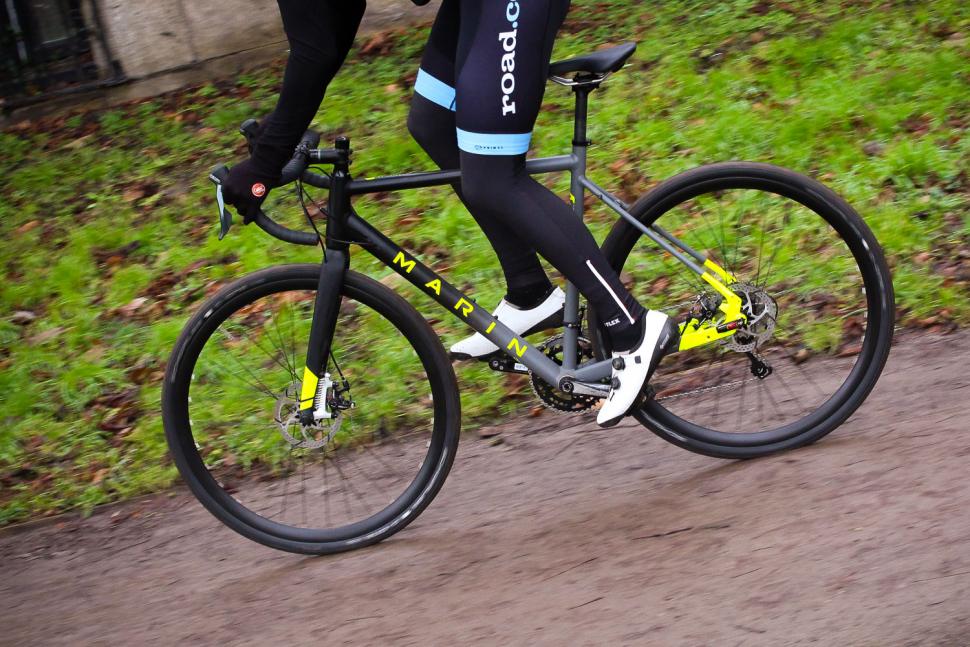
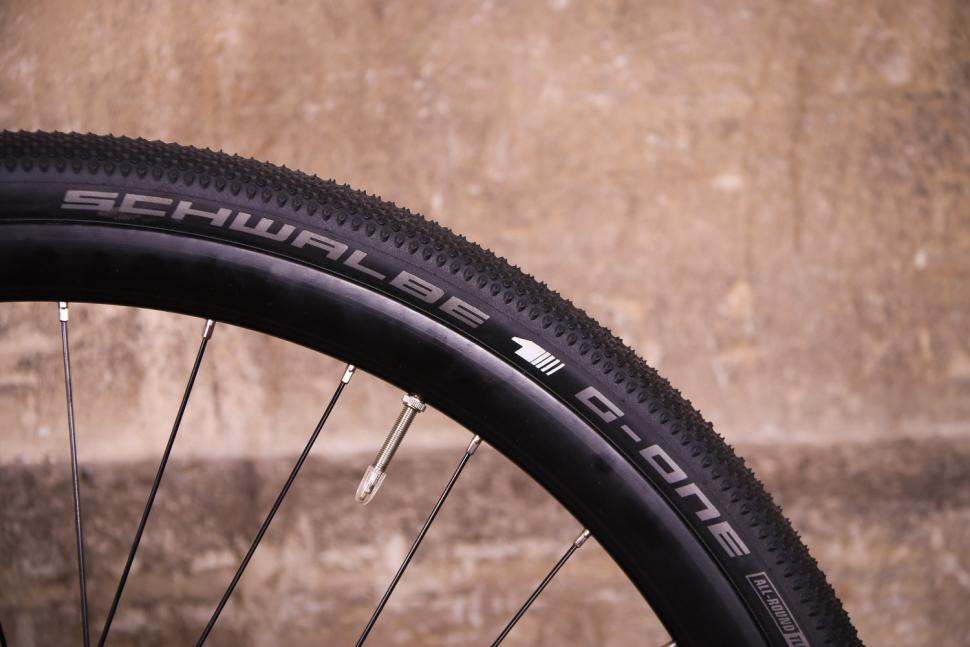
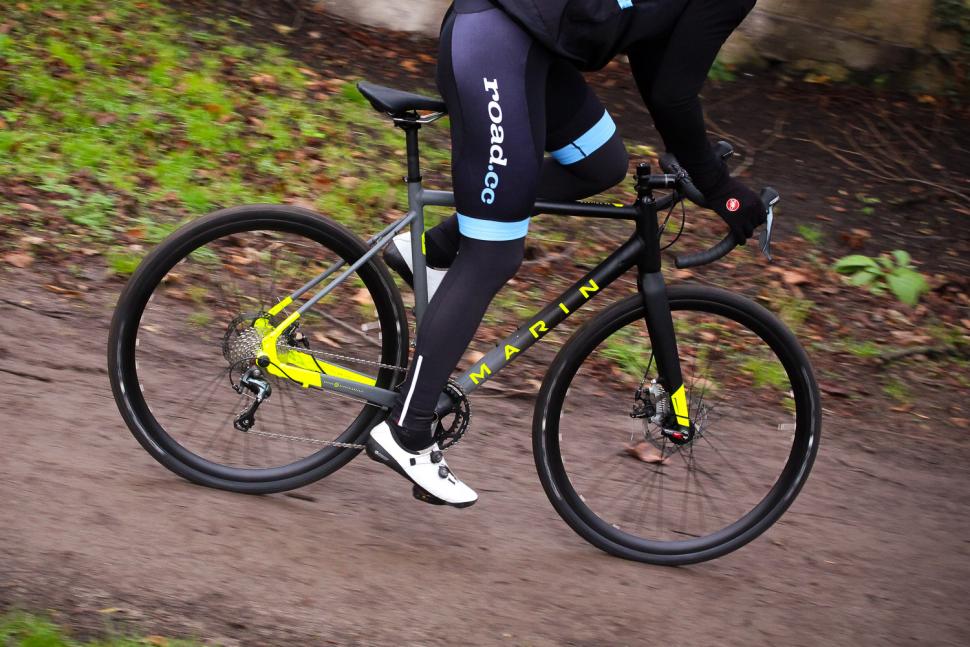

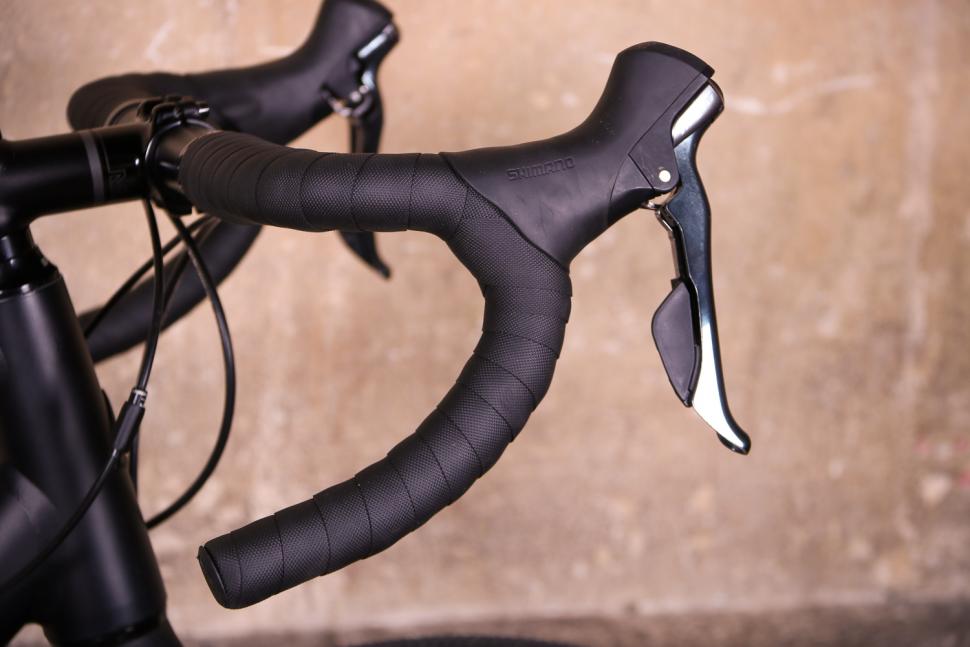
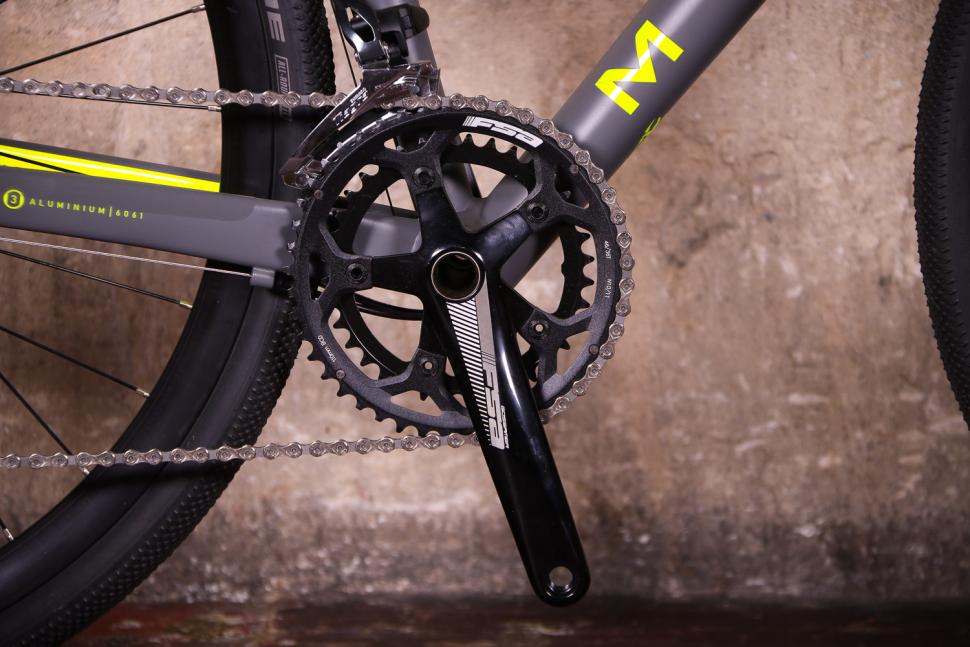
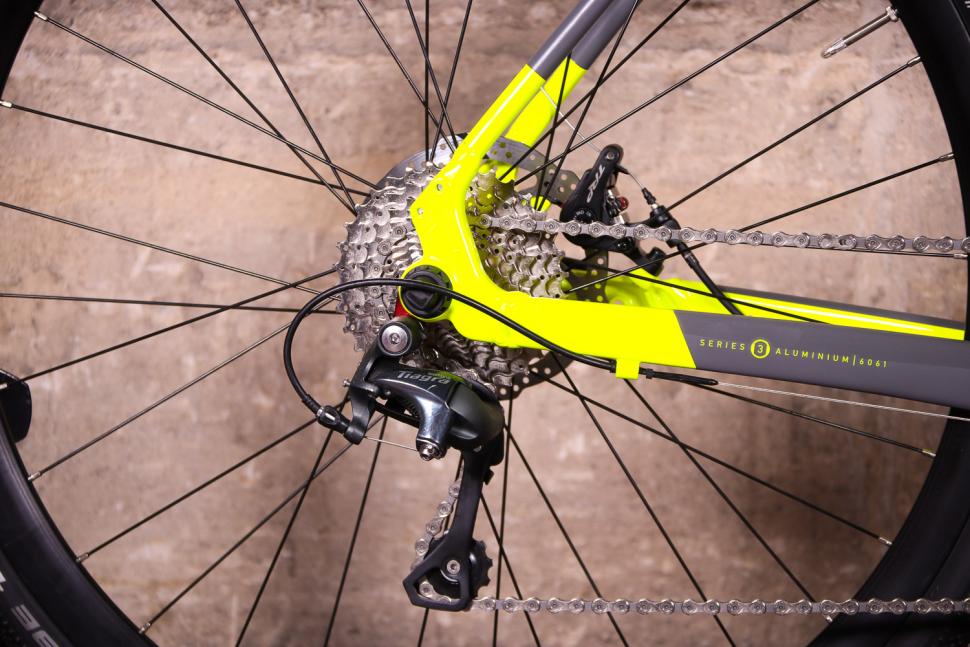

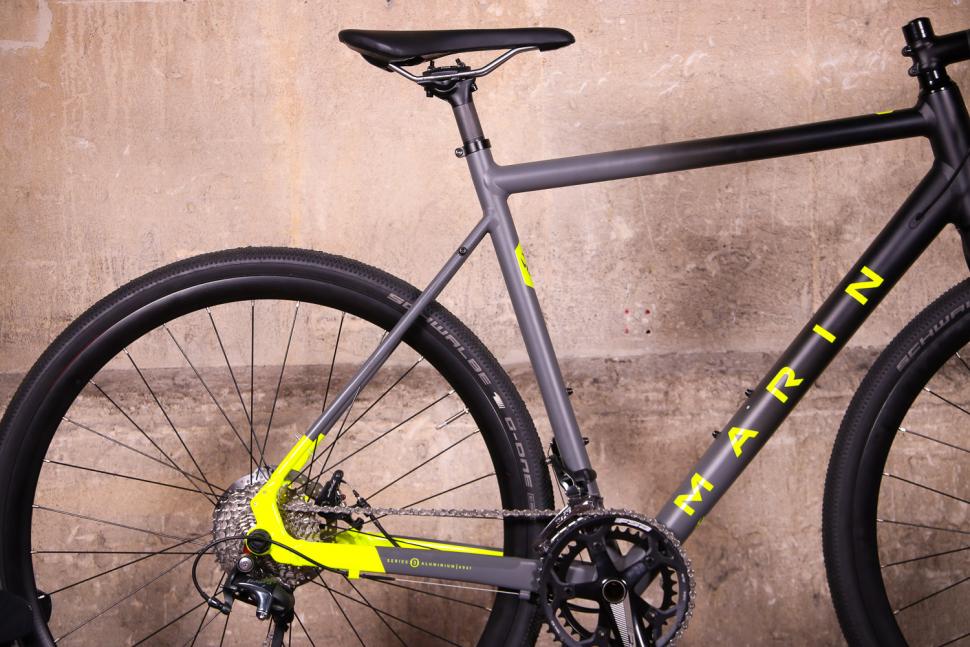

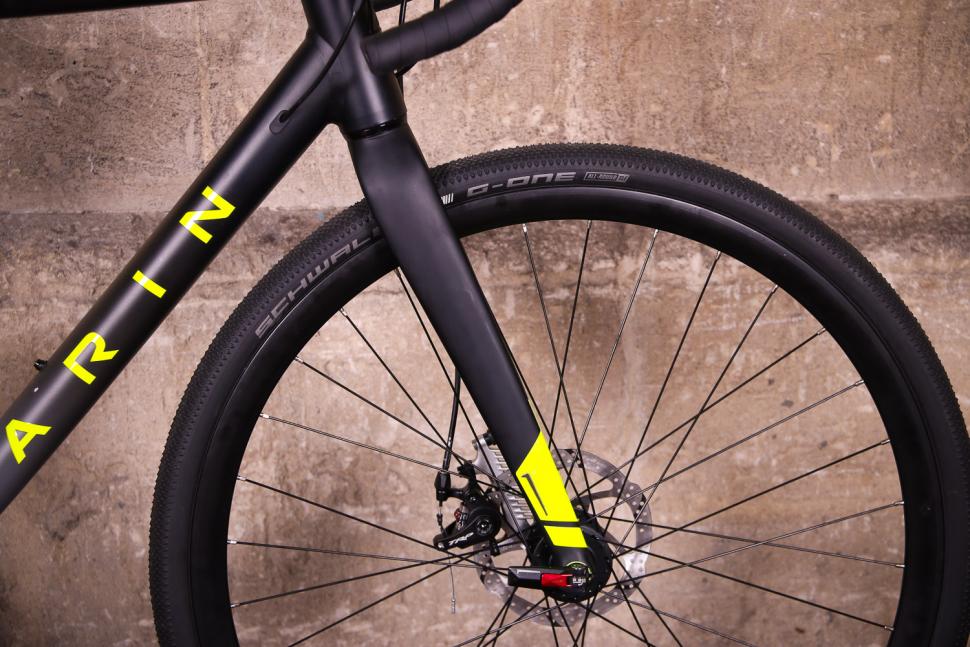
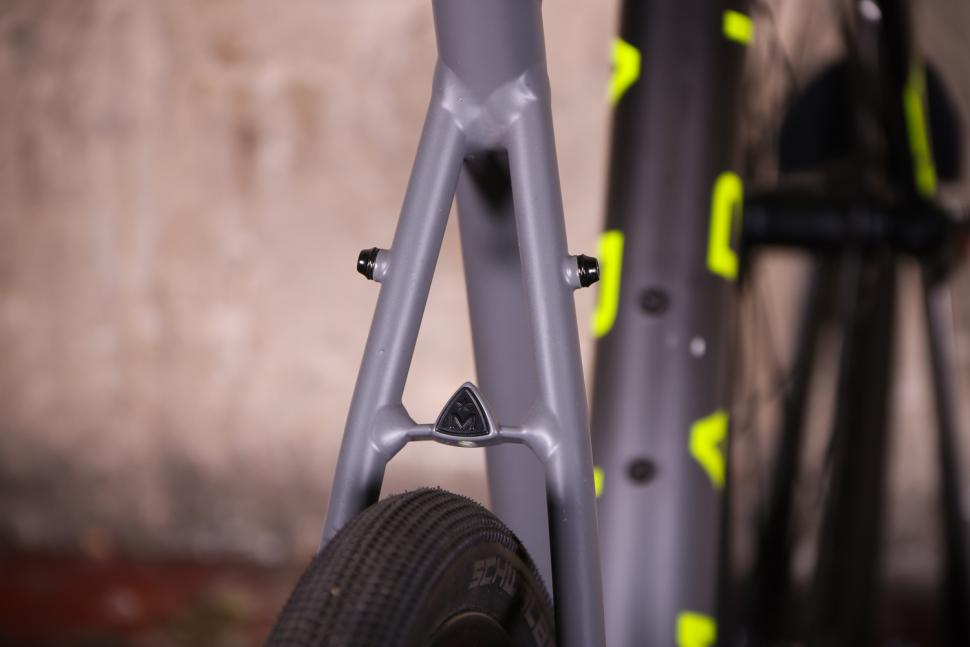
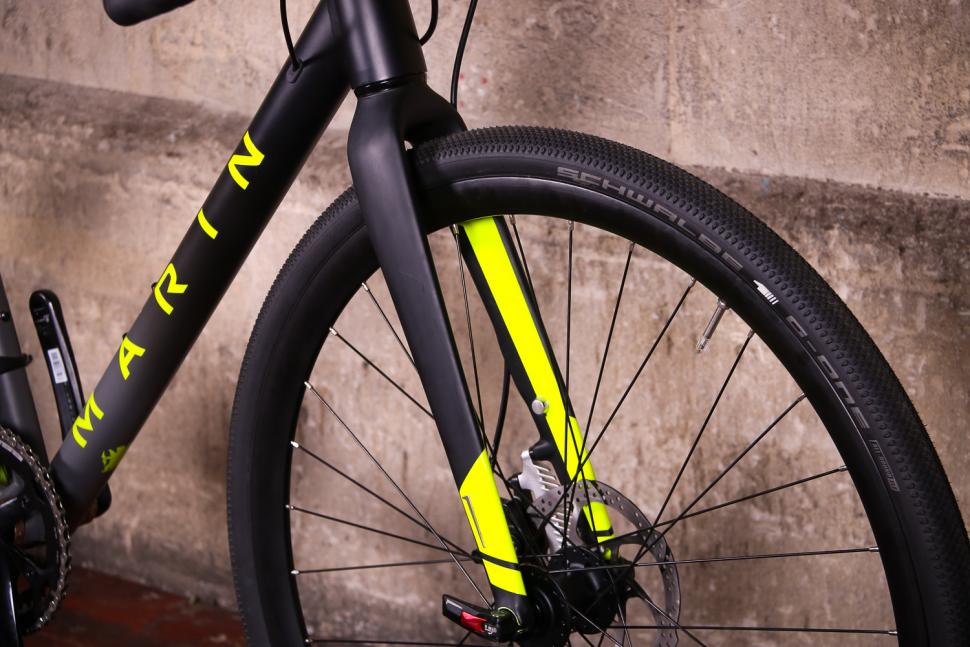
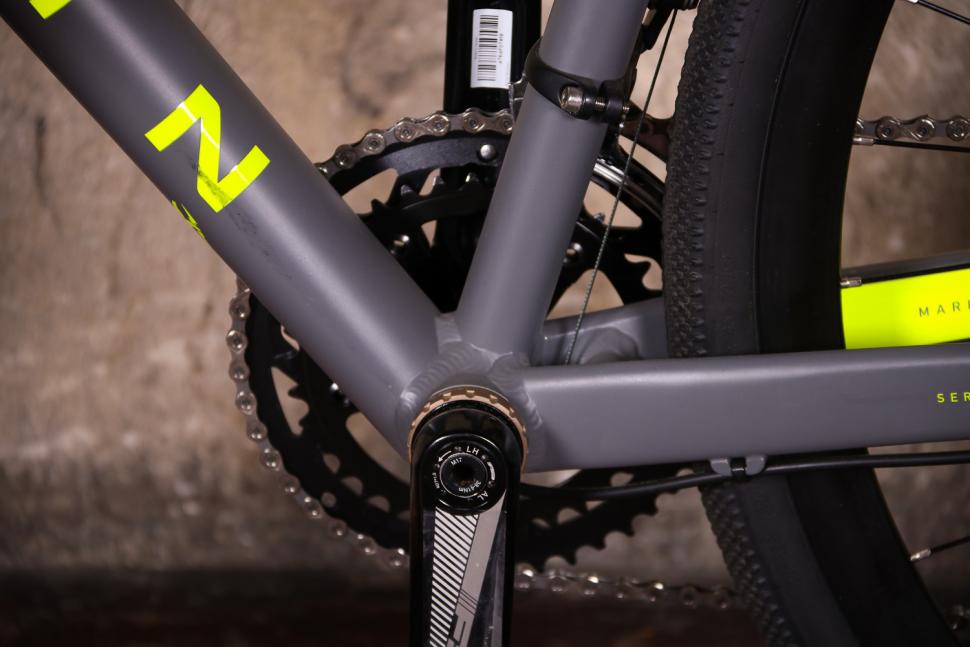

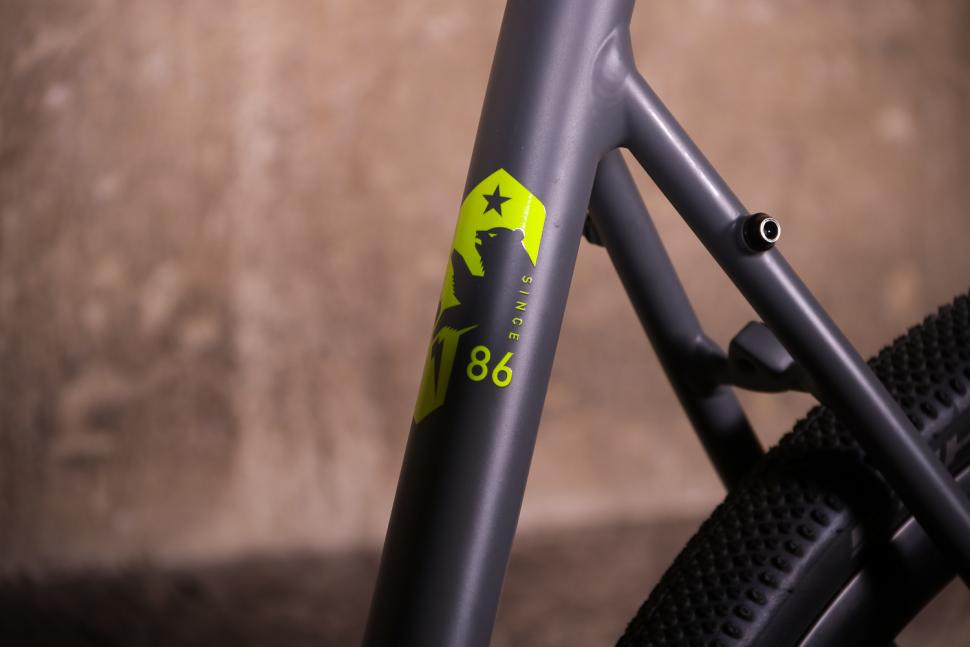



Add new comment
20 comments
Since when did Marin have such a high brand tax?
£1700...and it needs upgrades?
If I spent the difference between this price and what I paid for my Marin Four Corners on some careful upgrades I reckon I could get the Four Corners down to well below this weight if I( was that bothered about it), and it rides like a total dream off road.
This isn't going to sell well and will be discounted heavily not too far down the line at less than a grand which is still over priced.
I'm just finishing an all new build do it all road/gravel/touring bike, has same carbon modulus as a Specialized Enduro pro (so tough as old boots), fitted ultegra 11 speed bar SRAM c/set, carbon bars/post and Pro-Lite wheels.
With 40mm tyres it's 7.7kg with pedals, cost, sub £800.
Yeah I shopped around but 85% incl frameset bought direct from UK shops, the rest UK private sellers.
it shows what you can get for your money, so why oh why would anyone with an ounce of cycling knowledge buy this massively overpriced velo?
Brand, brand, brand.
Plus most aren't going to build up a frame like we do
Except Marin are no longer a name that rolls off the tongue nor has Kudos at any level that your average joe would know about and I did say someone with an ounce of knowledge wouldn't see this as good VfM.
When was the last time you saw a pro rider in any discipline ride a Marin to victory?
Yup they have some excellent bikes, I loved their offerings BITD, in fact I'd say their Four corners bike is a far better option for an all round bike that can be used off road, whilst aimed primarily at the more touring/adventure bracket its less than half the price for not a great weight penalty and has a steel frame which isn't too bad a thing.
You can get a 2017 GT Grade Carbon Ultegra for the same money and it's 3kg lighter.
The more you look at it the less sense it makes. For £100 less you can get a Rose
Pro Cross with a full Ultegra hydraulic groupset, with full carbon fork and it's
almost 2kg lighter.
Mike, you mentioned you could probably fit a 50mm tire in the fork. What's the clearance like in back at the chain/seat stays? Do you think a 650b x ~2.0in/50mm would fit?
£1,700, amasing when you look at the spesh entry level diverge for £800
I agree. 1700 for a 10kg+ alu tiagra bike. Someone is having a laugh. And 7/10 for value seems a bit much. For the same price from that lot up north you can get carbon and a better groupset.
Particularly like the styling nod to Marin's mtbs of old - this reminds me of the 90's Muirwoods/Bear Valley's hardtails etc. Love those bikes - still have an eBay alert in place to try and get one cheap.
I'm about to retire my getting to work bike, a 91 pine mountain, second hand in 97 for £250. It was the first bike I had seen in a shop window and really really wanted, early summer 92, and there it was when I needed an older cheaper bike before I moved to Birmingham. Well the hack bike thing doesn't seem to be me, and I have continually upgraded but kept retro. DX became XT, curve cantis. Orange forks faded on one side as I locked her up on a bridge always facing one direction, changed to black Kona project 2s. About 5-6 years ago I changed the very last bit that was not the frame, the little plastic gear cable guide under the bottom bracket, worn through.
Building a better commuter at the moment as I cannot get the quality bits that she really deserves, nice 26 inch rim brake rims for one, no more Mavic XC717s. They are a consumable that I cannot buy 2nd hand and as with everything else as they get rare they will get far more expensive.
Best £250 I ever spent on anything bike related.
Good luck with your quest.
So, review in summary:
'Bike....blah, blah, blah...got a KOM...blah, blah, blah...bike...got a KOM...bike...blah, blah, blah...nearly got a KOM.'
Yeah, I'm not sure there was much detail about the bike:
"The internal cable routing is interesting. They go in the top sensibly enough, but all exit the down tube at the bottom bracket through the open end of the down tube itself, which is left unwelded at the bottom. The down tube is ovalised to the width of the BB, affording a ton of weld space, so there are no stiffness issues with the lower portion being open. This design seems to solve the endless hassle that internal cable routing brings: trying to get it back out of a very small aperture. The routing along the chainstays is external, befitting the retro paint job"
Discs add weight, but also eat up budget resulting in heavier kit elsewhere.
I know this after speccing two otherwise identical custom builds (Genesis Equilibrium disc, and Genesis Equilibrium non-disc).
I wouldn't agree with 7/10 for value.
Does the weight stated include pedals as well?
I like it.
But. Why are bikes getting heavier again?! Is it because these "Do it all" bikes have to be overbuilt to cope with a potentially lardy-arsed rider bombing down a gnarly single track? Of course wider tyres are a little heavier, but with my 2000 Euro alloy road bike tickling 7kg, I'm not prepared to accept a nearly 4kg penalty for a bit of extra tyre clearance. Even the (really nice) Mason Definition is 8.5kg, and that at a much higher price.
Loving the early 90s throwback colour scheme, pitty they didn't keep the rounded type face for the lettering.
Yeah, such a blast from the past on this one!! Love it.
Looks nice, but that's a huge price increase over similarly specced rivals with no obvious reason why.